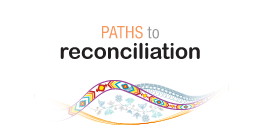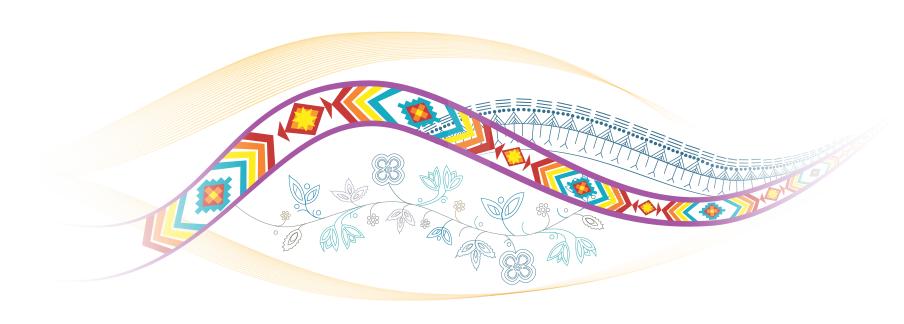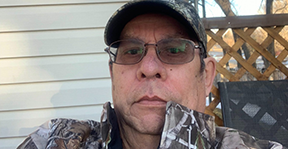UNMARKED BURIAL SITES ASSOCIATED WITH INDIAN RESIDENTIAL SCHOOLS
CLICK EACH SITE INDICATOR TO SHOW / HIDE
RESIDENTIAL SCHOOLS
BOUNDARIES
Colonial International / Provincial
Treaty Territory
Timeline of Indian Residential School Operations
Click a specific school type below to see only its timeline
Overview
Pre-Confederation schools
Métis schools
Post-Confederation schools
Newfoundland schools
Hospital schools
Denominational schools
Provincial or territorial schools
Private schools
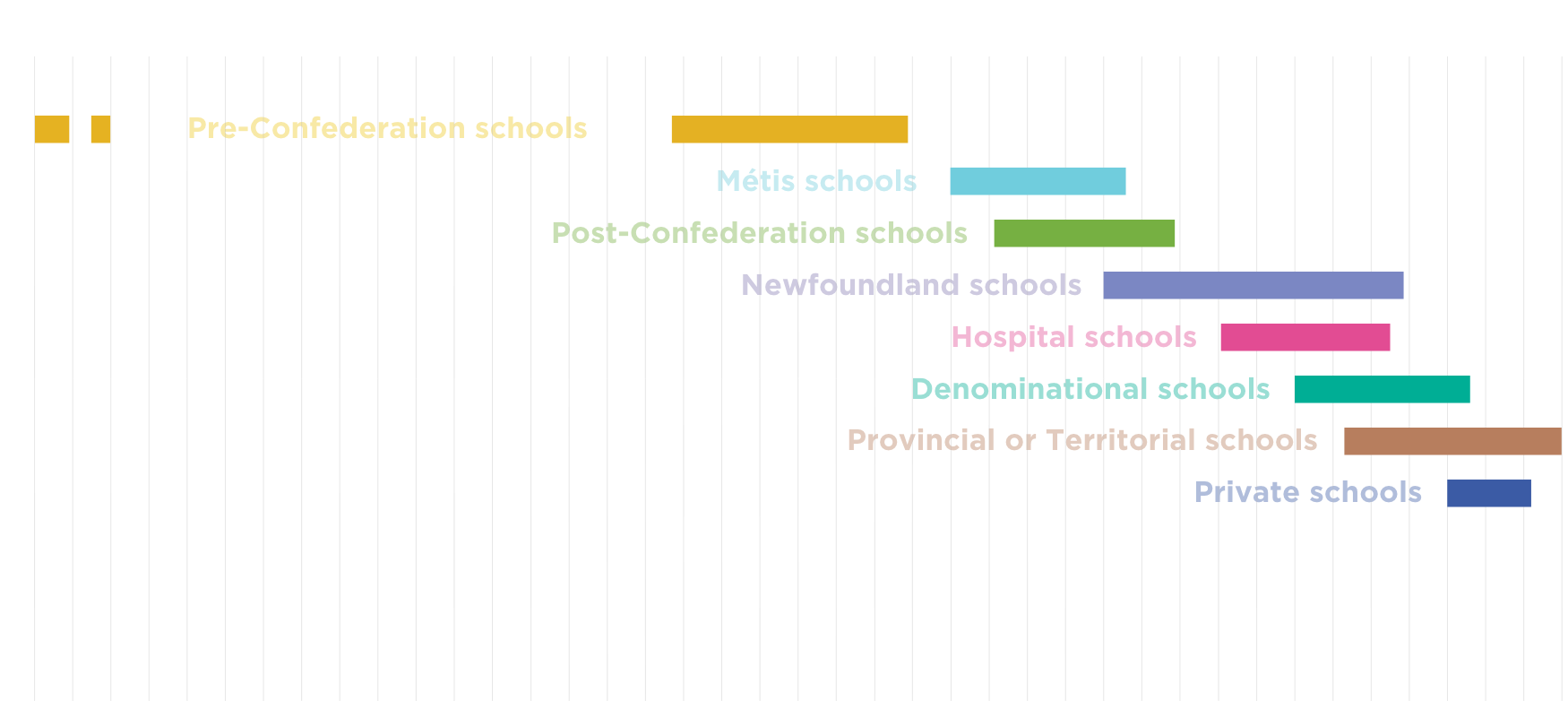
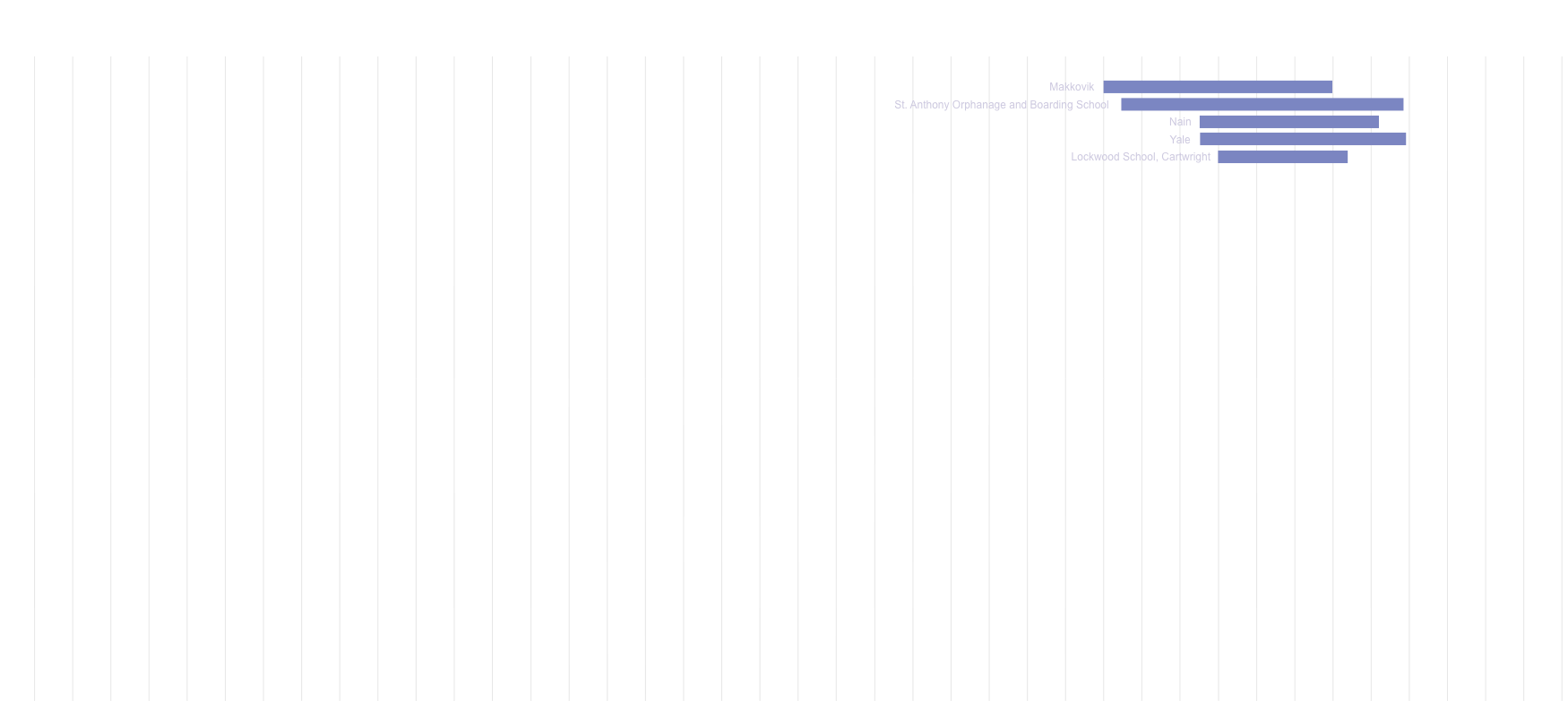



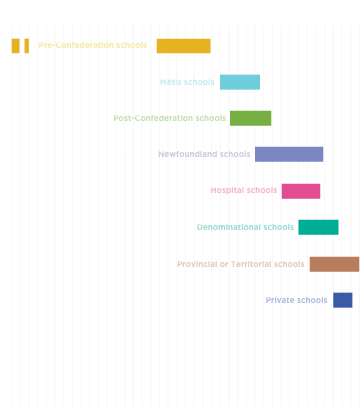
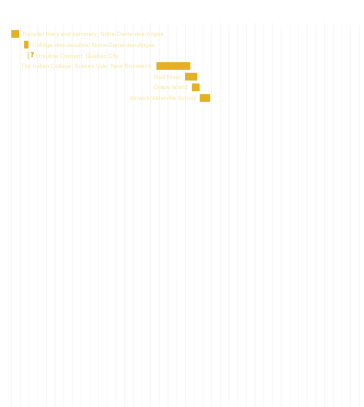
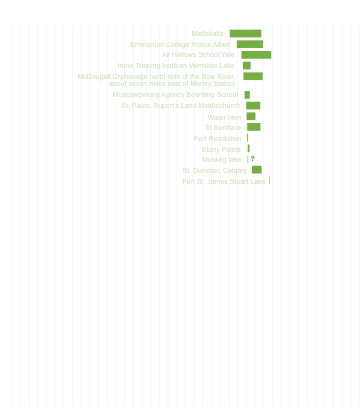
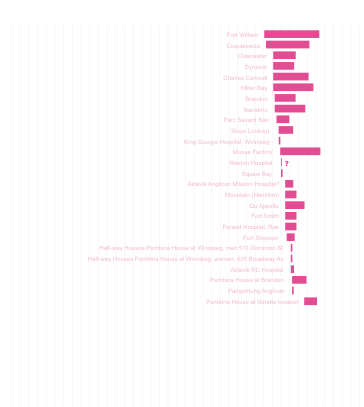
About Paths to Reconciliation
Non-IRSSA Recognized Indian Residential Schools
In 2019 Canadian Geographic created the online, interactive map – Non-Indian Residential School Settlement Agreement Recognized Indian Residential Schools as one component of a larger initiative- Paths to Reconciliation- to raise awareness of residential schools in Canada and highlight the experiences of Indian Residential School students and their families.
This map charts 62 of the Indian Residential Schools not recognized by the Indian Residential Schools Settlement Agreement (IRSSA) for various reasons including that they were operated by the provinces, churches, or other organizations. Some of the schools were not recognized as they were operated in hospitals, while others were excluded from the IRSSA due to the period of time in which they were operating.
It also includes links to a series of first-hand accounts and related original-source materials from survivors and, in some instances, family members of survivors of these schools. A series of related lesson plans are provided along with the map to support student and adult learning.
In addition to this website, stage one of Paths to Reconciliation also includes a documentary film, a feature story in Canadian Geographic, a poster map, educational resources as well as a cross Canada school tour presented in partnership with the Orange Shirt Society.
Funding for Paths to Reconciliation provided by the Department of Canadian Heritage.
Unmarked Burial Sites Associated With Indian Residential Schools
In 2022, based on the integrity and success of Paths to Reconciliation, Canadian Geographic secured funding from the Department of Canadian Heritage to enhance the interactive map entitled “Non-IRSSA Recognized Indian Residential Schools”. This second stage of Paths to Reconciliation: The Journey Continues, includes 12 additional Survivor stories, the creation of 4 new lesson plans, the creation of an online, interactive map focused on Unmarked Burial Sites Associated with Indian Residential Schools.
On June 8, 2022, during the development period for these Canadian Geographic education assets, Canada announced the appointment of Ms. Kimberly Murray as the Independent Special Interlocutor for Missing Children and Unmarked Graves and Burial Sites Associated with Indian Residential Schools. This historic announcement led to an important collaboration between Canadian Geographic and the Office of the Independent Special Interlocutor that allows for a deeper learning opportunity for all Canadians and more importantly, the sharing of relevant information that may support Survivors, Indigenous families and communities who are leading the work to search and recover missing children and unmarked burials. This information was complied by Dr. Scott Hamilton over many years, including as he worked on an Expert Report, called “Where are the Children Buried?” for the Truth and Reconciliation Commission of Canada. We are extremely grateful to Dr. Hamilton for providing permission to include archival and aerial photos and descriptive information about the potential location of unmarked burials to be included in this map.
A key guiding principle of this project is to ensure respect for Survivors, Indigenous families, communities and leadership and the bodies and spirits of the missing children. As such, we ask all users of this map and these materials to uphold this guiding principle of respect; which includes using respectful terminology. Many Survivors, families and communities have clearly stated that they do not approve of the term “discovered” because they have shared the truths about the existence of unmarked burial sites for decades. To this end, the term “recovered” is used to affirm the truths of Survivors who have raised our collective awareness about the atrocities perpetrated against them, their families, and their communities and have carried the burden of bringing these truths to light. To be clear, the term “recovered” in the context of this map does not indicate that human remains have been exhumed. The process by which Indigenous Nations, communities and families choose to handle their searches and investigations is theirs to determine in accordance with Indigenous laws.
The locations of searches being conducted and photos of these sites are provided with the primary purpose of sharing information to support Survivors, Indigenous families and communities that are leading the Sacred Work to locate, protect and commemorate unmarked burials of the missing children. The secondary purpose is to share information with the general public for awareness and education. Consistent with the guiding principle of respect, access to this information should not be used to harass, threaten, intimidate or disrespect Survivors, Indigenous communities or the missing children, in any way.
Accuracy of information is of the utmost importance. This map will be updated on an ongoing basis to support the Sacred work that Survivors, Indigenous families and communities are leading to locate, protect, and commemorate the unmarked burials of children who died while attending Indian Residential Schools. The primary source of data used to create this map is publically available information. Survivors, Indigenous families and communities, however, are the experts and hold important knowledge about the location of unmarked burials on the sites of former Indian Residential Schools and other institutions that may not be accurately reflected. If you have any concerns about the accuracy of this map, please submit them to [email protected].
Funding for Paths to Reconciliation: The Journey Continues is provided by the Department of Canadian Heritage. Considerable in-kind contributions, resources and supports from both the Office of the Special Interlocutor and the Royal Canadian Geographical Society have enhanced this map significantly.

![]()
Unmarked GRAVES AND BURIAL SITES ASSOCIATED WITH INDIAN residential schools
The information provided in this map is intended to support the recovery work that Survivors, Indigenous families and communities are leading to locate, protect and commemorate the unmarked burials of children. This information may be upsetting for some. If you require immediate support, please contact the following:
The Indian Residential School Survivors Society’s 24/7 Crisis Support line:
1-800-721-0066
The 24 hour National Indian Residential School Crisis Line:
1-866-925-4419
Respectful Use of Information
The locations of searches being conducted and photos of these sites are provided with the primary purpose of sharing information to support Survivors, Indigenous families and communities that are leading the Sacred Work to locate, protect and commemorate unmarked burials of the missing children. The secondary purpose is to share information with the general public for awareness and education. Access to this information should not be used to harass, threaten, intimidate or disrespect Survivors, Indigenous communities or the missing children, in any way.
Accuracy of Information
This map will be updated on an ongoing basis to support the Sacred work that Survivors, Indigenous families and communities are leading to locate, protect, and commemorate the unmarked burials of children who died while attending Indian Residential Schools. The primary source of data used to create this map is publically available information. Survivors, Indigenous families and communities, however, hold important knowledge about the location of unmarked burials on the sites of former Indian Residential Schools and other institutions that may not be accurately reflected. If you have any concerns about the accuracy of this map, please submit them to [email protected]
Continue to the map
Education resources
The Paths to Reconciliation education resources have been developed in collaboration with Indigenous educators, knowledge keepers and Elders, as well as Indian residential school Survivors and their families, to support teachers and students actively working towards building a just and inclusive Canada where the truths of Indigenous peoples are acknowledged and respected.
Learning and Dialogue Guides now features guide #1 which has been designed to help teachers and students exploring the first published volume of the final report of Special Interlocutor Kimberly Murray, Sites of Truth, Sites of Conscience, better understand why truth, accountability, justice, and reparations are essential to reconciliation.
Lessons one through nine (case studies designed with early, intermediate and senior level learners in mind) are based on a rich and unique collection of testimonies kindly gifted to Canadian Geographic Education to illuminate some of the lesser-known stories about the Indian Residential School system. We encourage teachers to rely on these first-hand accounts to inspire conversations about schools that have yet to be formally recognized and acknowledged by the Indian Residential School Settlement Agreement (IRSSA).
Lessons ten through thirteen (inspired by, and created in collaboration with, the Office of the Independent Special Interlocutor for Missing Children and Unmarked Graves and Burial Sites associated with Indian Residential Schools) can be used to educate students about ongoing efforts in support of Survivors, Indigenous families and communities working to locate, protect and commemorate unmarked burials of their missing children.
This work is dedicated to all First Nations, Inuit and Métis children who attended recognized and non-IRSSA recognized residential schools, their families, and their communities. It is our hope that these resources will assist teachers, students and others on their paths toward truth-seeking and authentic acts of reconciliation. Canadian Geographic Education is grateful to all collaborators who kindly made the development of these tools possible.
Learning and Dialogue Guides
A learning and dialogue guide designed to help teachers and students exploring the Sites of Truth, Sites of Conscience report
Non-IRSSA Recognized Indian Residential Schools
 Lesson 1
Clara Clare: Loss of Language and Culture
Lesson 1
Clara Clare: Loss of Language and Culture
A lesson on the impacts of loss of language and culture for early learners.
 Lesson 2
Clara Clare: Discrimination and Racism
Lesson 2
Clara Clare: Discrimination and Racism
A lesson on discrimination and racism for intermediate learners.
 Lesson 3
Clara Clare: Oral History and Genocide
Lesson 3
Clara Clare: Oral History and Genocide
A lesson on oral history and genocide for senior learners.
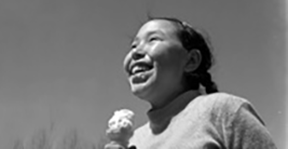 Lesson 5
Leah Idlout: Injustice and Children’s Rights
Lesson 5
Leah Idlout: Injustice and Children’s Rights
A lesson on injustice and children’s rights for intermediate learners.
 Lesson 6
Leah Idlout: Propaganda, Resistance and Truth
Lesson 6
Leah Idlout: Propaganda, Resistance and Truth
A lesson on propaganda, resistance and truth for senior learners.
 Lesson 7
Mike Durocher: Bullying and Children’s Rights
Lesson 7
Mike Durocher: Bullying and Children’s Rights
A lesson on bullying and children’s rights for early learners.
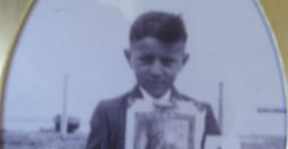 Lesson 8
Mike Durocher: Bullying
Lesson 8
Mike Durocher: Bullying
A lesson on bullying and the impacts of the residential school system for intermediate learners.
Unmarked Burial Sites Associated With Indian Residential Schools
 Lesson 10
Recognized vs. Non-recognized: A Fuller Understanding of Residential Schools in Canada
Lesson 10
Recognized vs. Non-recognized: A Fuller Understanding of Residential Schools in Canada
A lesson on recognized vs. non-recognized residential schools for senior learners.
 Lesson 11
Hiding in Plain Sight: Exploring Non-IRSSA Recognized Residential Schools in Canada
Lesson 11
Hiding in Plain Sight: Exploring Non-IRSSA Recognized Residential Schools in Canada
A lesson on non-IRSSA recognized residential schools in Canada for senior learners.
 Lesson 12
They Didn’t Come Home: Missing Children and Unmarked Graves Associated with Residential Schools in Canada
Lesson 12
They Didn’t Come Home: Missing Children and Unmarked Graves Associated with Residential Schools in Canada
A lesson on missing children and unmarked graves associated with residential schools for senior learners.
 Lesson 13
Together We Will Find Them: Special Interlocutor for Missing Children and Unmarked Graves and Burial Sites Associated With Indian Residential Schools
Lesson 13
Together We Will Find Them: Special Interlocutor for Missing Children and Unmarked Graves and Burial Sites Associated With Indian Residential Schools
A lesson on the Special Interlocutor for Missing Children and Unmarked Graves and Burial Sites Associated with Indian Residential Schools for senior learners.
Other Resources
The Indigenous Peoples Atlas of Canada Giant Floor Map and tiled map are equally valuable resources that intertwine geography and spatial awareness with an understanding of the history of Indigenous Peoples in Canada. The Giant Floor Map comes with hands-on learning materials and activities focused on the legacy of Indian residential schools. It can be booked by educators free of charge for three-week periods. The tiled map can be printed, laminated and used in various settings.
Other media related to Paths to Reconciliation
DOCUMENTARY
Returning Home (working title), directed by Sean Stiller
The legacy of Canada’s Indian residential schools and the decimation of wild Pacific salmon stem from a common story: a world where relationships are severed in the service of power, where we become detached from one another and the environment. Returning Home is a one-hour documentary comprising…
MAGAZINE FEATURE STORY
Survivor, by Lisa Charleyboy
A feature profile of Phyllis Webstad, creator of Orange Shirt Day (September 30), a grassroots-turned-global movement — that commemorates the Indian residential school experience and honours the students who attended them. Learn how Webstad turned her own ordeal into a powerful tool for reconciliation, and how Orange Shirt Day itself flourished across the country, buoyed by the will and interest of everyday people.
Excerpt:
“I know what I can talk about. I can talk about my first day, when Granny got me my shirt,” Webstad says she told her friend Joan Sorely.
No sooner were those words out of her mouth than she broke down. It was a deeply personal story that she had never shared before, not with her husband, nor with her children. Armed with a message, Webstad now had a mission. She had less than an hour to check out local shops for an orange shirt to wear during the big announcement.
“I had nothing orange. I hate orange,” she explains. “I’ve always hated orange.”
The next day at the news event, much like her fateful first day at the residential school, Webstad was a bundle of nerves in her bright new orange shirt.
“I was to be a part of the media announcement,” she says. “So, there’s the Chief, and the mayor, and all these people with big titles, and there’s me, unemployed residential school survivor.”
But on April 24, Webstad courageously shared her story about the orange shirt that was taken from her. Little did she know, she was about to share her story with the world.
